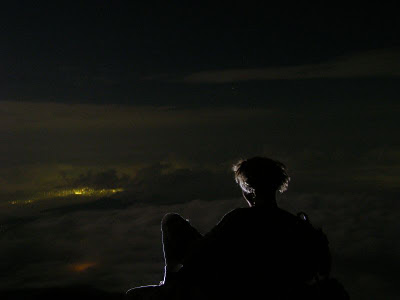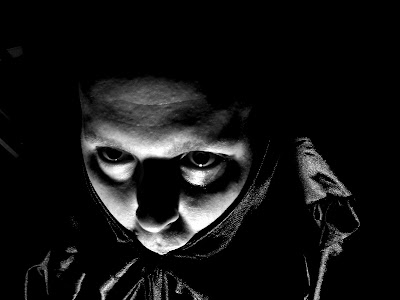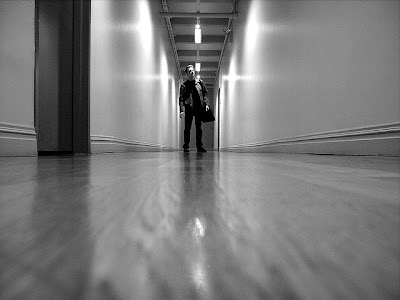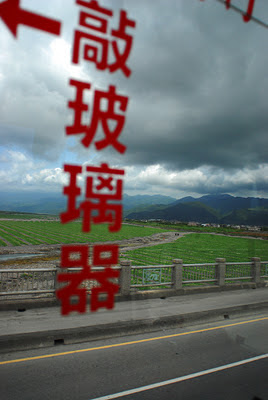From Bujinkan Santa Monica by Michael
Ideas as fundamental as Kyūsho 急所 (vital or tender points on the body) can seem mysterious when you try to really understand them. We have many Kyūsho 急所 in the Bujinkan. They have interesting names which vary according to the ryu. But their names and locations on the body are just the beginning and a door to understanding something deeper.
Let's consider the meaning of the kyūsho 五輪 Gorin.
I thought I was comfortable using this kyūsho until I read what Hatsumi Sensei wrote in his Advanced Stick Fighting book,
"The kyūsho known as "Gorin" means to point at "chi-sui-ka-fu-ku."
I was confused but curious about this statement. This inspired me to examine 五輪 Gorin more closely.
Gorin is normally explained as five vital points around the navel. That seems simple enough. But what are the five? and what about the variations of 五輪月影 Gorin Tsukikage and 五輪稲妻 Gorin Inazuma?
You will be hard pressed to find any Bujinkan teacher to explain more than the name and general area of 五輪 Gorin. But what does it represent? What does it do exactly? Why are there five points? And what about Hatsumi Sensei's reference above?
Usually 五輪 Gorin is translated to 5 rings. If you search for it online you will get the rings that symbolize the Olympics. Not too helpful for our study of ancient Japanese kyūsho.
In Mikkyō or tantric buddhism 五輪 Gorin is often symbolized by the Gorintō 五輪塔 which you will find all over Japan commonly used as memorial markers for the dead. These stone markers have associations with the five elements.
from JAANUS:
"Each piece in the five-story pagoda (Sanskrit = stupa) corresponds to one of five elements. The bottom story is square and corresponds to the earth ring (Japanese = Chirin 地輪). Next is the spherical water ring (Japanese = Suirin 水輪), surmounted by the triangular ring of fire (Japanese = Karin 火輪). Above this is a reclining half-moon shape (Japanese = Fūrin 風輪), representing the wind, and topmost is the gem-shaped ring of space (Japanese = Kūrin 空輪)."
Now we are getting somewhere! Hatsumi Sensei also made reference to these five elements. But where do the directions come from and why does the stone monument look nothing like 5 rings?
To go deeper we have to dig into the source of this imagery. The morpheme -rin can mean “wheel,” “circle,” or “ring,” but in this usage it translates as cakra (chakra) in the yogic sense of the five power centers of the subtle body. The gorin no tõ shows each of these power centers as having a different shape, and each of these shapes indicates a different great element. From bottom up these are: 1) square for earth, 2) round for water, 3) triangular for fire, 4) semicircular for air, and 5) a crescent moon-shaped jewel for space (or the three-dimensional equivalents of these shapes).
Historically the source of these 5 elements goes back to India, then through China and Taoist ideas and into Japan as often seen with the influence of Mikkyō. Some of the earliest references in Japan of these ideas come from 五輪九字明祕密釋 The Gorin kuji myō himitsu shaku (Commentary on the Secrets of the Five Cakras and Nine Syllables) composed by Kakuban 覺鑁 (1095-1143AD). In this text the five cakras 五輪 of the body are correlated with the Taoist theory of five viscera 五藏.
What does five viscera have to do with Gorin? Kyūsho are points to be struck, poked, prodded, stabbed or otherwise disturbed to have an effect on our uke's body and spirit during a fight. The five viscera in the Chinese system are: heart, lungs, liver, kidneys and spleen.
How does poking someone in the stomach affect the heart? Well, just have someone try it and you might find out! But this also connects to traditional Chinese taoist medicine: "Blockage of the six bowels causes imbalances of the five viscera." I've been hit in the stomach myself and I could well imagine striking these kyūsho around the belly contributing to this sort of imbalance.
The five phases of the chinese: wu hsing 五行; or Japanese: gogyõ are also correlated with these five directions: Earth is considered "north"; Fire is "south"; Ku is "center"; air is "east"; Water is "west".
 |
| 五輪 Gorin above the navel |
These directions are related to the path of the sun, rising in the east, passing across the southern sky, overhead or centered at noon, setting in the west, then travelling under the earth through the darkness of the north at night. We can see this path represented on our kyūsho chart and as Soke Hatsumi has shown in his drawings.
I'm glad I found all these connections to help me understand Hatsumi Sensei's simple instruction about Gorin. Of course this rabbit hole I climbed into is deep and twisty. The information in this post is what I discovered out of my own curiosity and may not at all represent what Hatsumi Sensei had in mind in regards to Gorin. I'm sure I missed something or even could be completely wrong but that's what makes learning in the Bujinkan fun!
Our training is constantly evolving so we cannot be attached to any definitions. In fact, Sensei recently said he had written the kanji of Gorin五輪 with a different reading as Gorin 五臨. He said it was to encourage people to find and re-establish a dialogue and speak from their essence, face to face and dealing with the truth head on.
It is so important to train with good teachers and experience their truth directly in person. This is what I strive for in in my own classes and in every class with Sensei or with any of my teachers in the Bujinkan.



…












